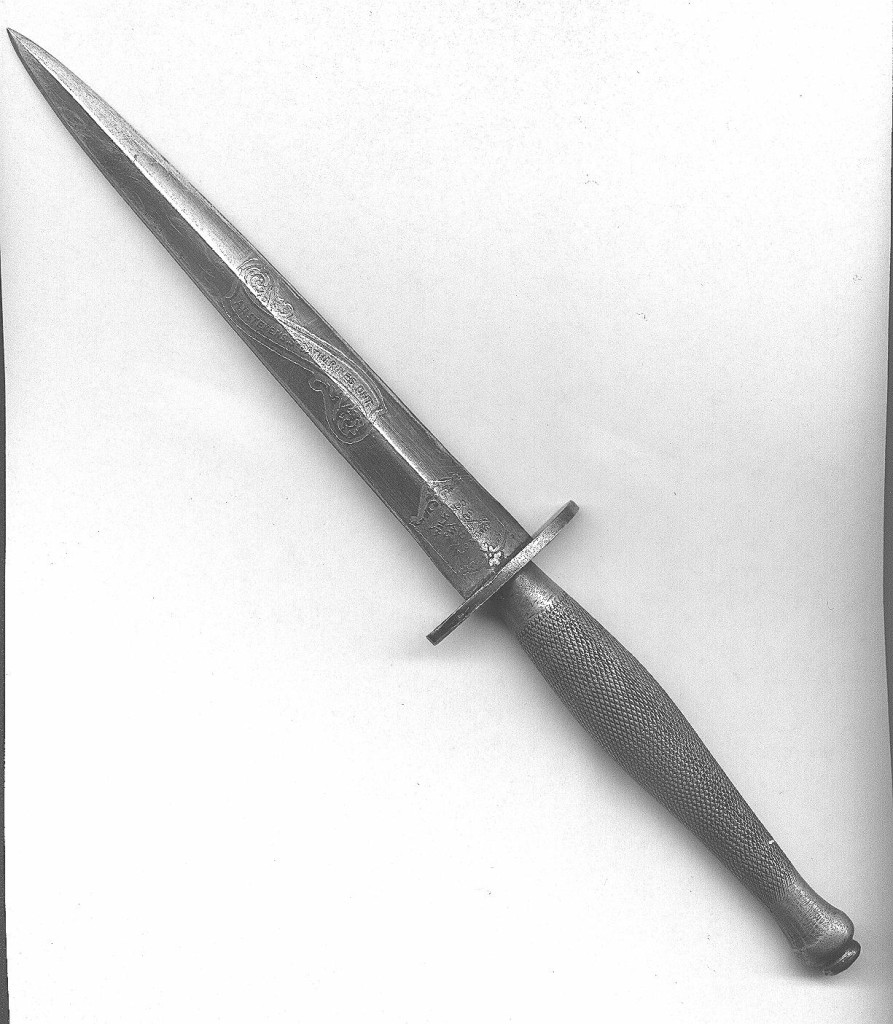
The F-S Fighting Knife was developed about 1940 by William Fairbairn and Sykes. Both men had served with the Shanghai Police Force and were extremely experienced in actual combat, and they worked with the newly formed British Commandos. This knife quickly became a symbol and was used in a Victory Loan campaign. The F-S Fighting knife became a classic and was well loved by the servicemen. It went through various changes, mainly to speed up production and continued to be manufactured and issued after WWII. Please note that many people mistakenly called it a “Sykes-Fairbairn”. The early knives are clearly marked F-S Fighting Knife. Fairbairn’s name is often misspelled as well. The F-S Fighting Knife inspired various other knife designers in World War II. The USMC Stiletto was a close copy as was the OSS Stiletto. The V-42 Commando Knife made by Case for the First Special Service Force is similar, but distinctly different and was intended to be held differently.
Fairbairn appears to have been more of the close combat type as he instructed on knife and pistol close combat. Sykes had been in charge of the sniper unit with the police. They were came to the UK at the beginning of World War II and became instructors for the Commandos at which time this fighting knife was developed.
When the knives were in production, there was apparently no formal terminology regarding the variations. As a result, collectors have developed terminology, but it is not totally consistent. On this page I am using the terminology I developed and published back in 1970s, but I may include in brackets some of the modern alternate terminology, some of which I find to be erroneous.
I became interested in these knives as a boy because my father still had his named knurled grip straight guard Wilkinson knife that he had been issued with while attached to No. 4 Commando in 1943. Unless stated otherwise, the knives shown on this web site are or were from my own collection. I am more interested in knives that show use and ideally have a known history, rather than mint specimens that never went anywhere and never did anything.

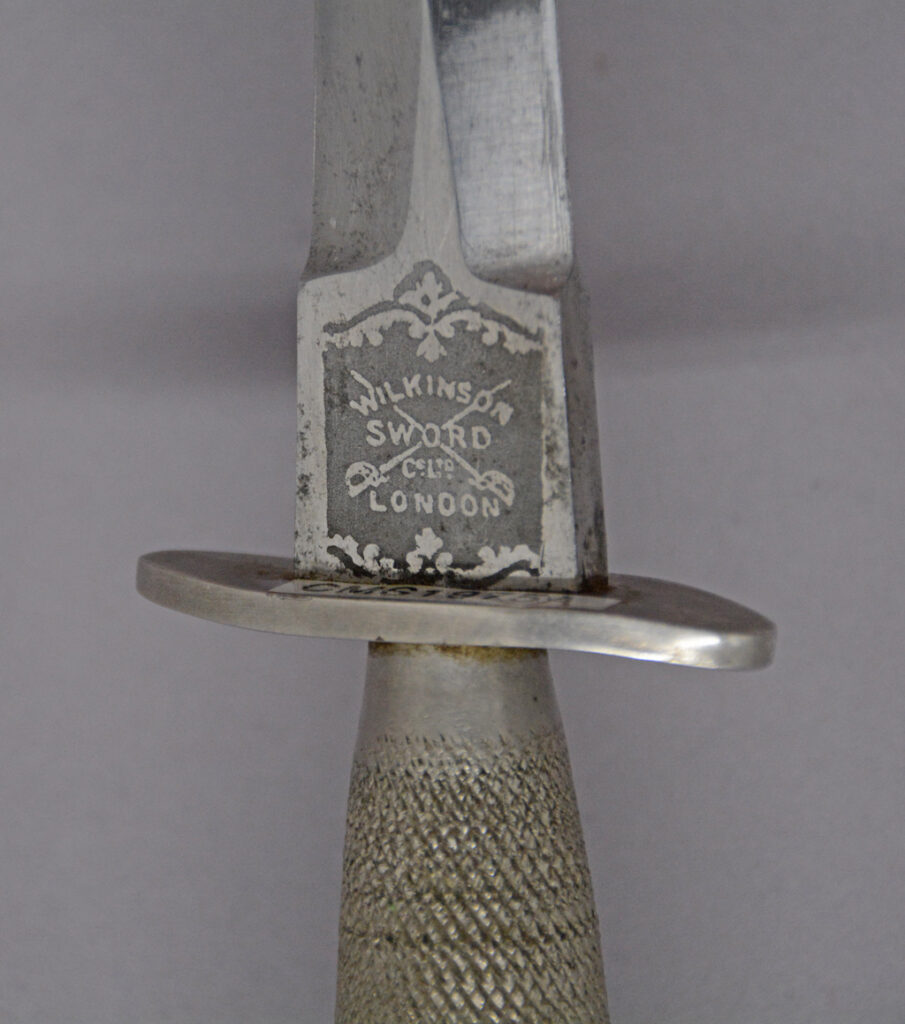
The earliest examples had a knurled brass grip and the scross guard was an “S” shape. Tehere were a wife and a narow version of this. There a flat pentagonal area in front of the cross-gaurd that had the Wilkinson etching on it.
The next version also had a knurled grip and the etching on the blade. There was a straight cross guard and a small triangle on each side of the blade where it was ground down slightly to fit into the hole in the cross-guard.
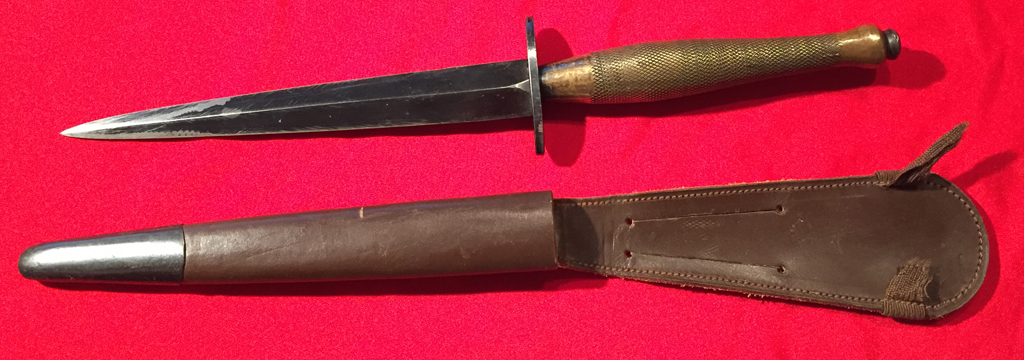
Simplification of these eliminated the etching. Many of these were stamped “/|\B2” on the cross-guard. The /|\ (Broad Arrow) was the British issue mark. Some have /|\ above a capital “I” for India. Canadian marked examples with C/|\ (arrow inside the C) are quite rare.
I

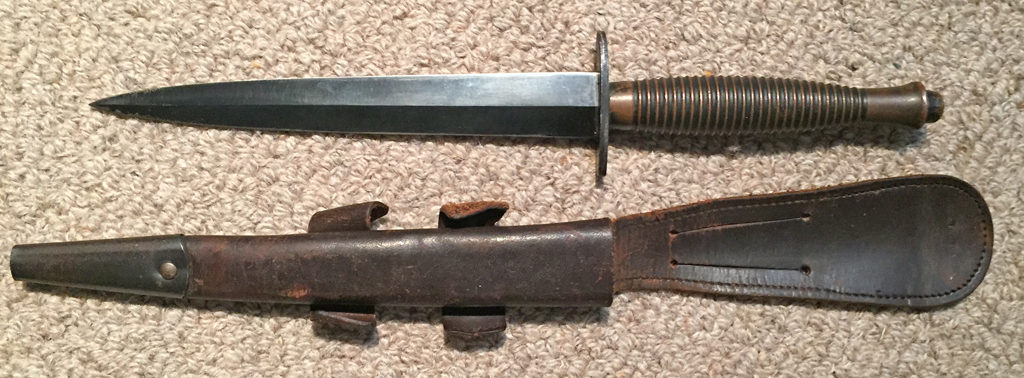
The next major model was a ringed grip. These had the handles cast and a mold number appears on the pommel, usually a 1, 2, 3 or 4 as I recall. The blades were thinner. A simple marking on the crossguard perhaps. Note that this model continued to be made and issued post-war and if the crossed keys or full name of the maker are on the knife, then it is post-war.
Then there are the MANY variations. Ringed and beaded (called beaded and roped by some, but incorrectly as it is beads design, not a rope pattern). Wooden handles were occasionally made but they threw off the blance of the knife which was designed to be hilt heavy. Foreign countries such as France made many of F-E Fighting Knife variations or similar knives.
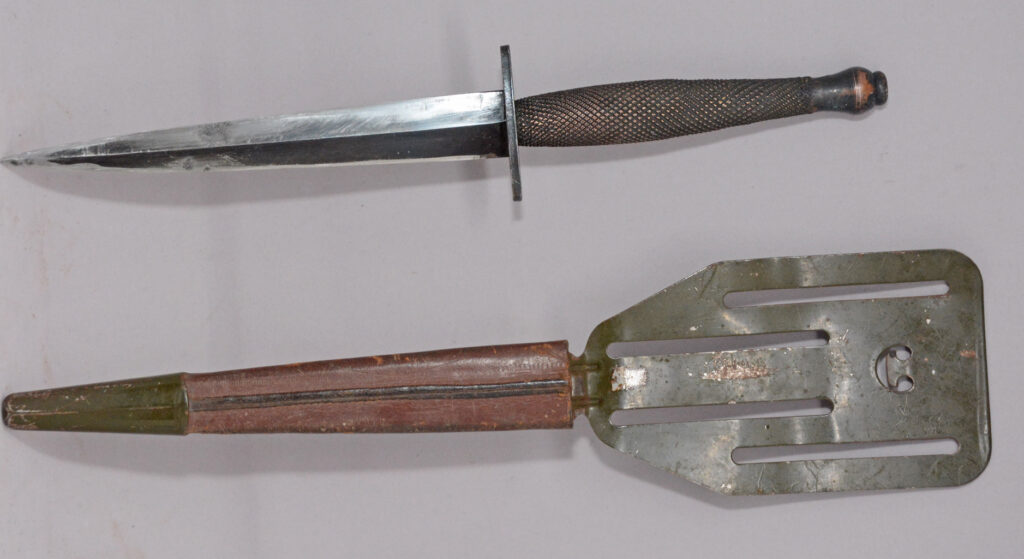
Similar knives which obviously are releated to the F-S Fighting Knife include the OSS Stiletto. Unmarked and with a so-called “pancake flapper scabbard. A rubber “O” ring was fitted tp retain the knife in the scabbard (missing on the one in the photo). This was designed so that it could be worn high or low on a belt, or angled forwrd on left of right side. I tried wearing one as a test, and it was uncomfortable. The OSS was the WWII predecessor of the Amerian Central Intelligence Agency.
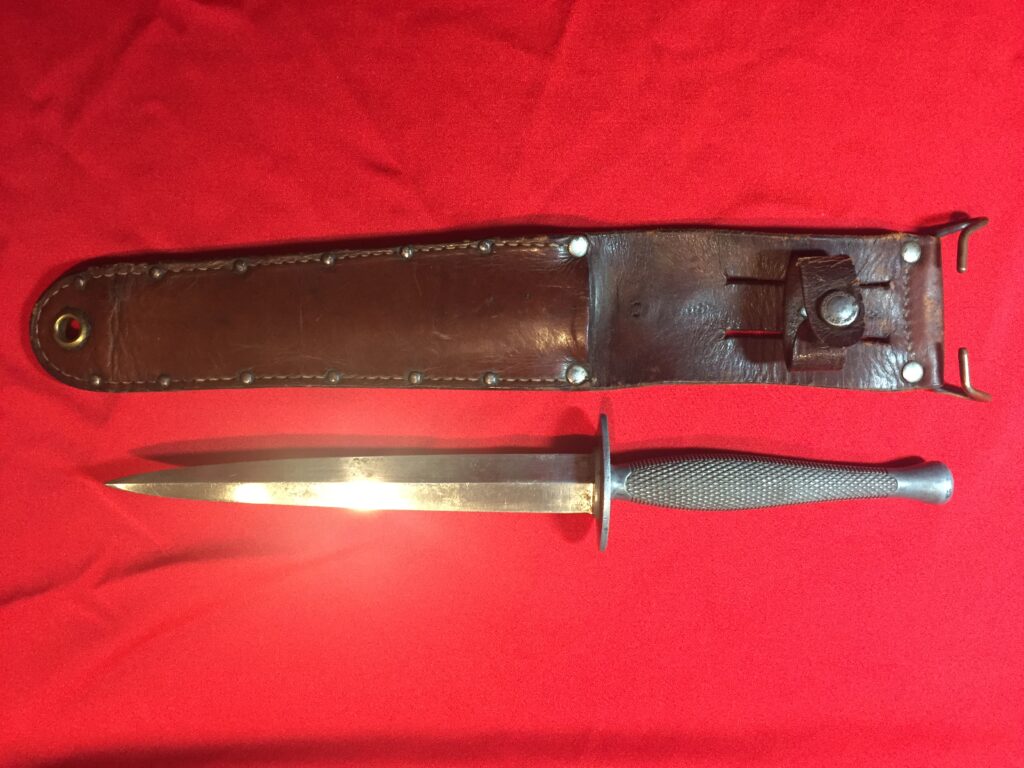
Another colose copy was the U.S.Marine Corps Stiletto. These were cheaply made and also have a cast handle, different from the F-S Fighting Knoife in that the USMC one was cast onto the blade tang, there was no pommel nut, and the cross-guard was integral with the handle. The scabbard was a U.S. style flate leather scabbard similar to that used for the M3 Fighting Knife.
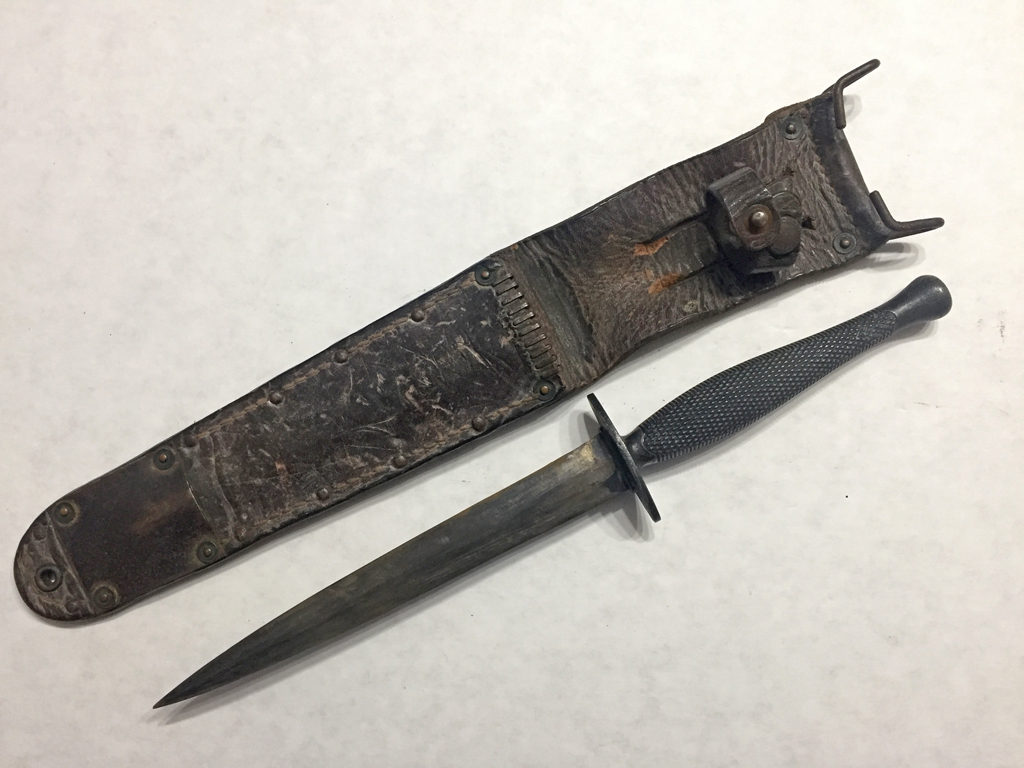
The First Canadian Parachute Battalion obtained a supply of these and there were blackened complete on the knife and the front of the scabbard.